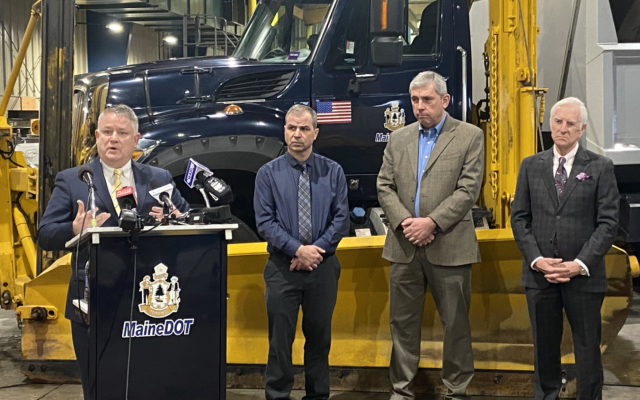
Maine to fund fewer road projects over 3 years amid ‘slow decline’ of transportation system
AUGUSTA — The Maine Department of Transportation released a three-year road and bridge funding plan on Tuesday, Jan. 14 that will use more money to fund fewer projects, a symptom of rising construction costs and chronic underfunding of the state system.
Transportation Commissioner Bruce Van Note struck a dour tone upon the plan’s release, writing in an introduction it “largely consists of spreading what used to be two years of capital projects over three years” and saying his department is “competently managing a slow decline of our transportation system until bipartisan funding solutions materialize.”
Maine’s transportation system has long been embattled and reliant on annual borrowing to fund routine work, but those existing problems were exacerbated last year when construction costs rose sharply and forced the state to cancel tens of millions of dollars in road work.
“This level of funding is not sustainable,” Van Note said at a news conference at the department’s garage in north Augusta. “The system will not fail immediately and Maine DOT will work to avoid any serious safety impacts, but holding actions only work for a short time and reliability of the system will suffer.”
The plan for the 2020, 2021 and 2022 calendar years is funded to the tune of nearly $2.6 billion. That’s $150 million more than the last three years because of an influx of one-time federal grants, though 142 fewer projects are expected to be funded amid rising costs.
Notable projects that will be funded over the period include the replacements of the International Bridge between Madawaska and the Canadian province of New Brunswick, the Station 46 Bridge in Woolwich and the Veranda Street bridge over Interstate 295 in Portland.
The Madawaska project is a massive $85 million rebuild in concert with the New Brunswick government. Federal funds will make up $36 million of that project and $25 million of the $30 million Woolwich bridge reconstruction. Those grants were announced by U.S. Sen. Susan Collins, R-Maine, and the state and federal transportation departments last year.
Van Note’s department took many shortcuts to put together the plan, including $3.8 million in patching work on high-priority roads that will stand until long-term repairs can be made. The state will maintain $76 million for light paving on lower-priority roads.
The state’s annual road and bridge funding shortfall — the gap between what the Transportation Department can spend and what it thinks it needs to maintain the system — now stands at $233 million. As past plans have, that assumes voter-approved borrowing of $100 million each year.
A Maine blue-ribbon commission is examining funding solutions that could include a politically fraught gas tax increase, transfers from the state budget or fee increases. That commission was initially supposed to deliver recommendations to the Legislature in December, but it filed for an extension this month to continue work as it revolves around a potential solution.
Van Note said the commission’s work has him “as optimistic now as I ever have been” on the future of funding and that “structural, transformational change is needed that will have bipartisan support allowing it to avoid political whims in the State House in an election year.
“It’s a huge puzzle, right,” said Rep. Tom Martin, R-Greene, who sponsored the bill to create the commission and sits on it. “When we’re done, we want the whole puzzle completed.”